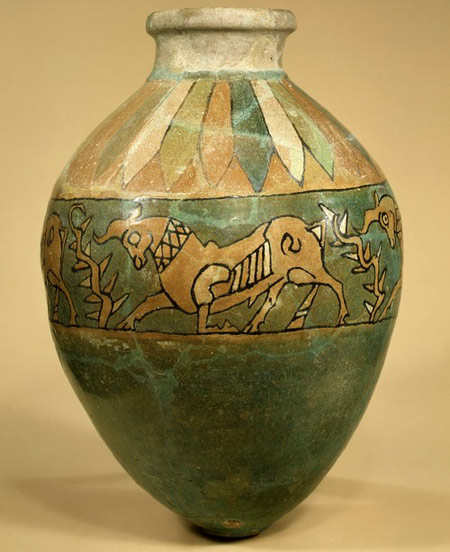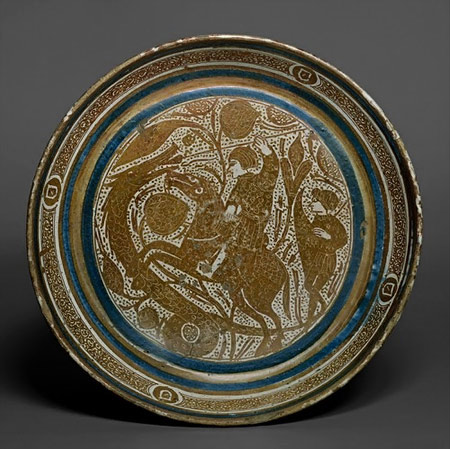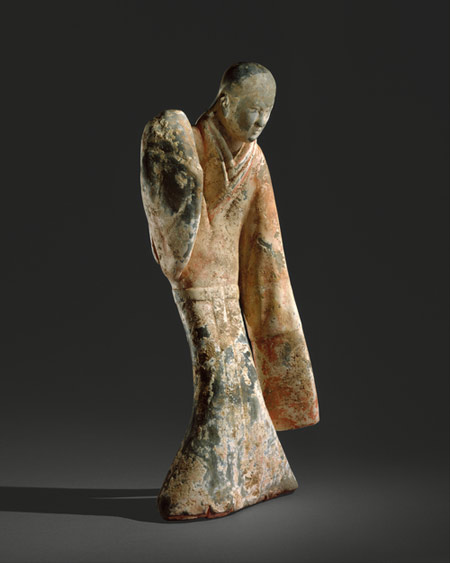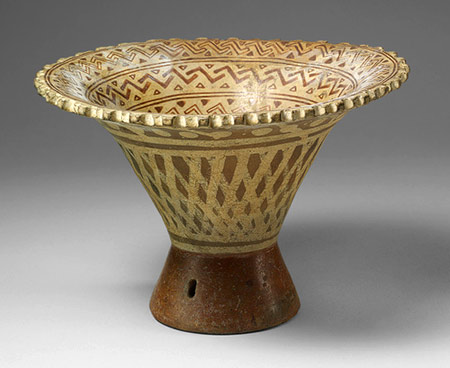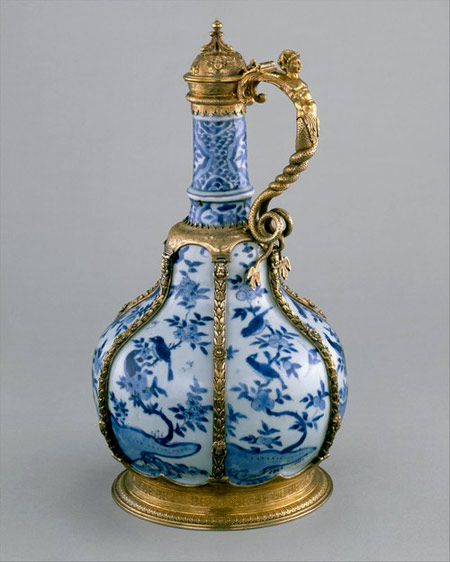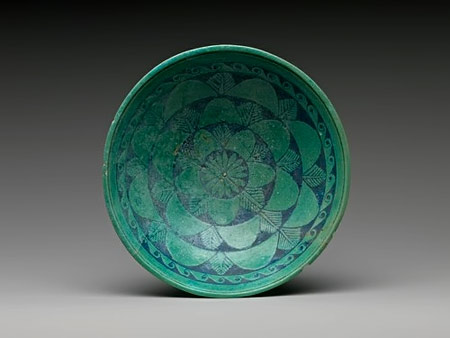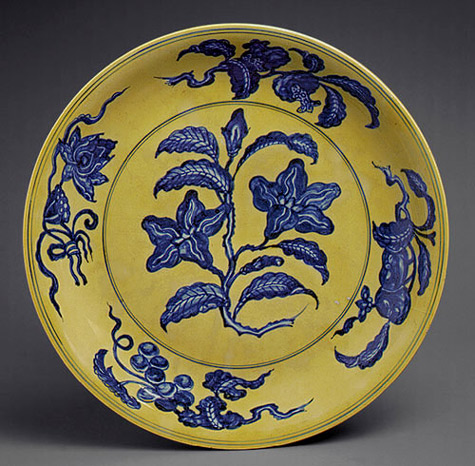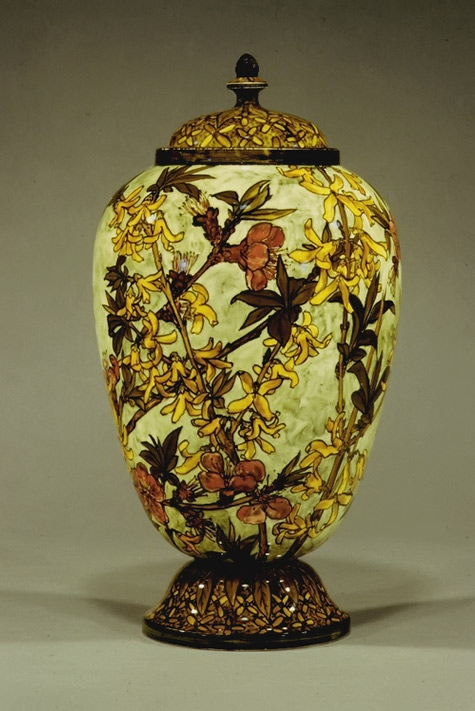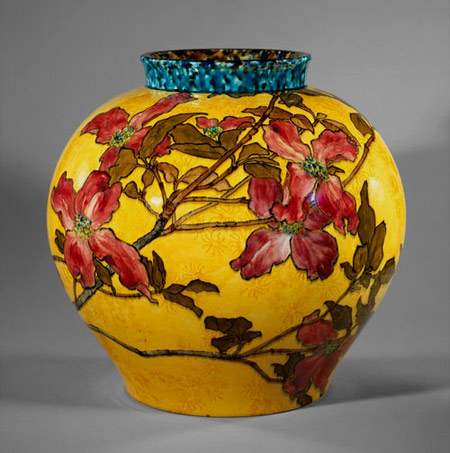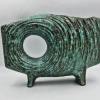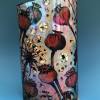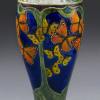Founded in 1870 in New York, The Metropolitan Museum of Art is one of the world’s largest and finest art museums. Its collections include more than two million works of art spanning five thousand years of world culture, from prehistory to the present and from every part of the globe. The Metropolitan Museum of Art attracts some five million people a year. This cultural gem is settled close to other historic sites of New York – few steps from the grand Central Park and the ultimate fashionable landmark of the Fifth Avenue.
Naturally they have an extensive collection of ceramics. From Greek & Roman Pottery, Egyptian and Moche ceramics to Islamic, Asian, European and American, all styles are represented. The video slideshow below features the examples of American art pottery, gifted from the collector Robert A. Ellison Jr. This collection of 250 pieces spans 80 years from 1876 to 1956 and is located in the New American Wing on the mezzanine level of the Museum’s Charles Engelhard Court . Outstanding works from every major American pottery and many lesser-known but historically significant potteries are featured in the collection.
[youtube]http://www.youtube.com/watch?v=Bk3zK1qyzL8[/youtube]
Here are some other fine examples of ceramics on display: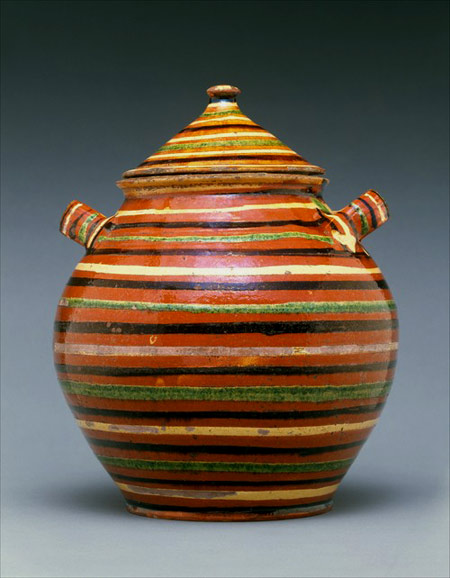
Sugar pot 1820 – 1840. Earthenware with slip decoration. Nth Carolina
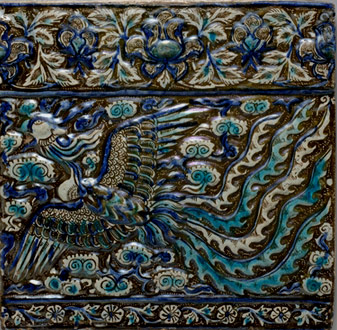 Ceramic tile with Image of Phoenix, late 13th century
Ceramic tile with Image of Phoenix, late 13th century
Iran, Takht-i Sulaiman
Jar with frieze of bulls.
Iron Age III 8th–7th century B.C. Iran, said to be from Ziwiye
This large jar—glazed in green, blue, brown, yellow, white, and black—represents an advanced glazing technique that was in widespread use during the first millennium B.C.
Basin with a Horseman Spearing a Serpent
Spanish Earthenware, tin-glaze (lustreware) 1390-1400
This is the earliest example of medieval lusterware in the Museum’s collection, this basin was probably either used as a serving dish or intended only for display. The brilliant coloring and expert craftsmanship of Spanish lusterware made it renowned throughout Europe.
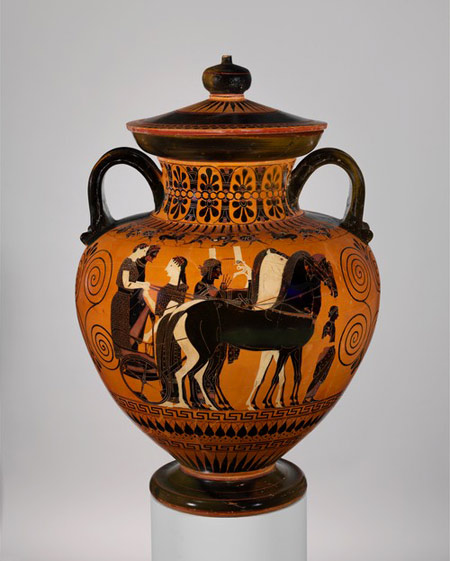 Greek terracotta neck-amphora (jar) 540BC
Greek terracotta neck-amphora (jar) 540BC
Chinese earthenware with slip and pigments
Western Han dynasty (206 B.C.–A.D. 9)
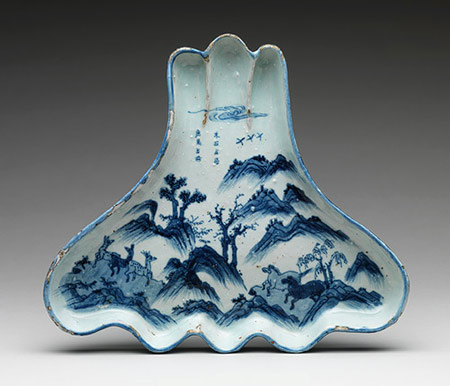 This dish was made in China during the Ming dynasty (1368–1644), comissioned by a Japanese tea practitioner for use in the tea ceremony.
This dish was made in China during the Ming dynasty (1368–1644), comissioned by a Japanese tea practitioner for use in the tea ceremony.
Porcelain with underglaze blue over white slip (Jingdezhen ware)
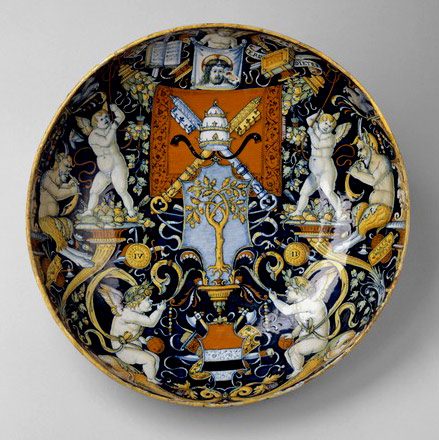 Maiolica (tin-glazed earthenware)bowl with the Arms of Pope Julius II and the Manzoli of Bologna 1508.
Maiolica (tin-glazed earthenware)bowl with the Arms of Pope Julius II and the Manzoli of Bologna 1508.
This bowl is widely regarded as one of the most beautiful pieces of majolica ever made. It is profusely decorated with the antique-inspired grotteschi that became popular in the early sixteenth century.
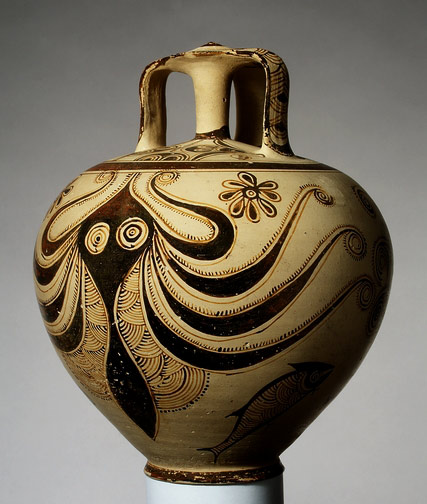 Helladic, Mycenaean
Helladic, Mycenaean
Terracotta stirrup jar with octopus
1200–1100 B.C.
[ For 1200BC the psychedelic octopus on this jar is very futuristic ]
Flared Bowl, 6th–8th century
Peru; Moche Ceramic
This flared bowl, called florero, has an empty pedestal base filled with small ceramic pellets that rattle when the vessel is shaken. Moche flared bowls were produced from the fourth century A.D.
When the west first accessed wares of true Chinese porcelain they seemed magically translucent, resonant when struck, impervious to liquids, aesthetically pleasing with great beauty of form. One of the earliest records of ‘true’ porcelain in the west is pieces listed in Queen Elizabeth 1’s 1574 inventories (pursseline’ or purselyn vessels). Enshrining a precious object was a practice of western Christianity for centuries. Adding gilded mounts offered some protection against the porcelain’s fragility while highlighting the esteem in which they were held. This pear shaped vessel painted under the glaze with cobalt blue has English silver gilt mounts dating from 1580. They comprise a neck mount spout cover with chain, a foliate handle mount and rim plus, an inner domed section within the cover. The painted flowers are lotus and peony interspersed with lozenges, lappets, floral medallions, cloud scrolls and so forth, withlingzhi, the sacred Chinese fungus on the spout symbolising longevity.
Egyptian turquoise and the dark blue bowl.
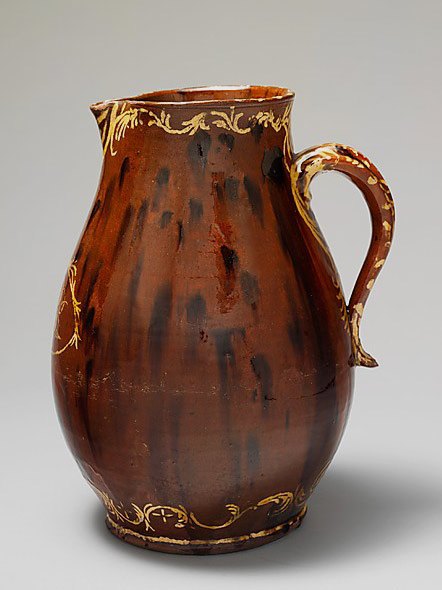 American earthenware pitcher; Redware with slip decoration. 1821
American earthenware pitcher; Redware with slip decoration. 1821
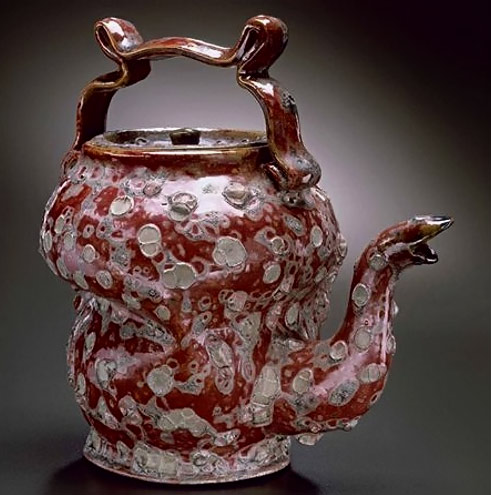 George E. Ohr Teapot ( 1857-1918 ) Biloxi Mississippi
George E. Ohr Teapot ( 1857-1918 ) Biloxi Mississippi
Dish, Ming dynasty, Hongzhi mark and period (1488–1505)
China
Porcelain painted in underglaze blue with yellow, overglaze enamels
John Bennett
John Bennett Vase
Container for Magical Substances (Perminangken [?])
19th–early 20th century, Indonesia, Sumatra
Toba Batak people
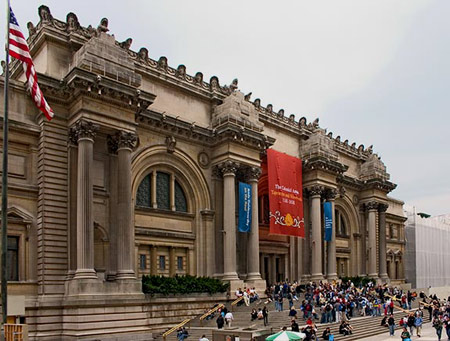 Met Museum NY
Met Museum NY

